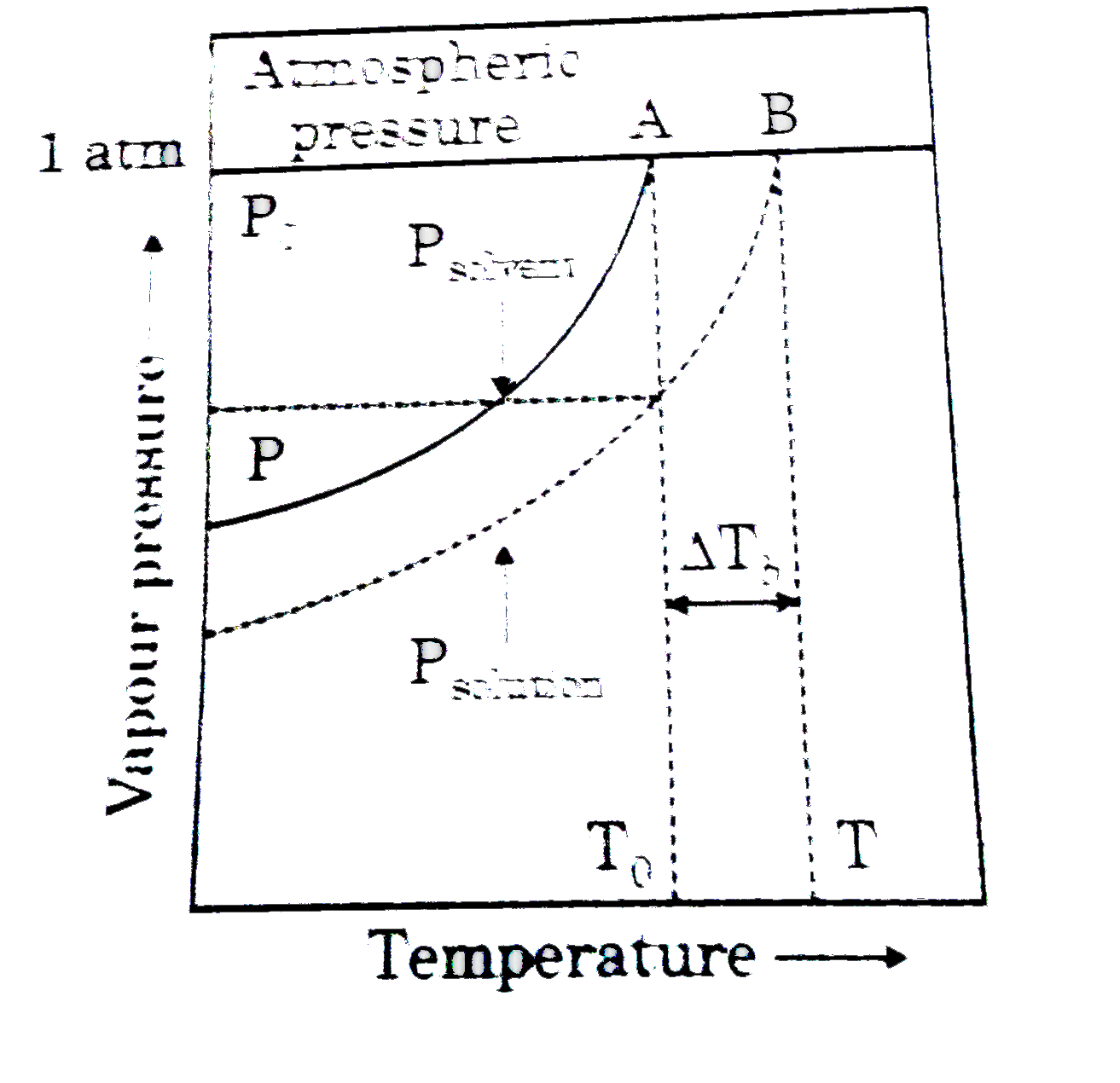2 g of a non-volatile non-electrolyte solute is disolved in 200 g of two different solvents A and B whose ebullioscopic constants are in the ratio of 1:8. The elevation in boiling points of A and B are in the ratio xy (x : y). value of y is (Nearest Integer)
To solve the problem, we need to find the ratio of the elevation in boiling points of two different solvents A and B when a non-volatile, non-electrolyte solute is dissolved in them.
1. Understand the Given Information:
- Mass of solute (non-volatile, non-electrolyte) = 2 g
- Mass of solvent A = 200 g
- Mass of solvent B = 200 g
- The ebullioscopic constants (K_b) of solvents A and B are in the ratio 1:8.
2. Use the Formula for Elevation in Boiling Point:
The formula for the elevation in boiling point (ΔT_b) is given by:
ΔTb=Kb⋅m⋅i
where:
- Kb = ebullioscopic constant of the solvent
- m = molality of the solution
- i = van 't Hoff factor (which is 1 for non-electrolytes)
3. Calculate the Molality (m):
Since the mass of the solute and the mass of the solvent are the same for both A and B, the molality (m) will be the same for both solutions:
mA=mB
4. Set Up the Ratio of Elevation in Boiling Points:
The elevation in boiling points for solvents A and B can be expressed as:
ΔTbA=KbA⋅mA⋅i
ΔTbB=KbB⋅mB⋅i
Since mA=mB and i=1:
ΔTbAΔTbB=KbA⋅mAKbB⋅mB=KbAKbB
5. Substitute the Values:
Given that the ratio of KbA to KbB is 1:8:
ΔTbAΔTbB=18
6. Express the Ratio:
If we express this ratio as x:y, we have:
x=1,y=8
7. Find the Value of y:
The problem asks for the value of y (nearest integer), which is:
y=8
Final Answer:
The value of y is 8.
- Mass of solute (non-volatile, non-electrolyte) = 2 g
- Mass of solvent A = 200 g
- Mass of solvent B = 200 g
- The ebullioscopic constants (K_b) of solvents A and B are in the ratio 1:8.
The formula for the elevation in boiling point (ΔT_b) is given by:
ΔTb=Kb⋅m⋅i
where:
- Kb = ebullioscopic constant of the solvent
- m = molality of the solution
- i = van 't Hoff factor (which is 1 for non-electrolytes)
Since the mass of the solute and the mass of the solvent are the same for both A and B, the molality (m) will be the same for both solutions:
mA=mB
The elevation in boiling points for solvents A and B can be expressed as:
ΔTbA=KbA⋅mA⋅i
ΔTbB=KbB⋅mB⋅i
Since mA=mB and i=1:
ΔTbAΔTbB=KbA⋅mAKbB⋅mB=KbAKbB
Given that the ratio of KbA to KbB is 1:8:
ΔTbAΔTbB=18
If we express this ratio as x:y, we have:
x=1,y=8
The problem asks for the value of y (nearest integer), which is:
y=8
The value of y is 8.
Topper's Solved these Questions
- JEE MAINS 2022BOOK - JEE MAINS PREVIOUS YEARCHAPTER - JEE MAINS 2022EXERCISE - PHYSICS (SECTION B)
1 Videos
- JEE MAINS 2022BOOK - JEE MAINS PREVIOUS YEARCHAPTER - JEE MAINS 2022EXERCISE - CHEMISTRY (SECTION A)
19 Videos
- JEE MAINS 2022BOOK - JEE MAINS PREVIOUS YEARCHAPTER - JEE MAINS 2022EXERCISE - CHEMISTRY (SECTION-B)
10 Videos
- JEE MAINS 2021BOOK - JEE MAINS PREVIOUS YEARCHAPTER - JEE MAINS 2021EXERCISE - Chemistry (Section B )
10 Videos
- JEE MAINS 2023 JAN ACTUAL PAPERBOOK - JEE MAINS PREVIOUS YEARCHAPTER - JEE MAINS 2023 JAN ACTUAL PAPEREXERCISE - Question
360 Videos
Similar Questions
2g of a non - volatile, non-electrolyte solute is dissolved in 100 g of two different solvents X and Y whose
Kb values are in the ratio of 1 : 4 The value of (ΔTb(X)ΔTb(Y)) is _________
View SolutionYg of non-volatile organic substance of molecular mass M is dissolved in 250g benzene. Molal elevation constant of benzene is Kb. Elevation in its boiling point is given by:s
View Solution
Knowledge Check
1g of a non-volatile non-electrolyte solute is dissolved in 100g of two different solvents A and B whose ebullioscopic constants are in the ratio of 1 : 5. The ratio of the elevation in their boiling points, ΔTb(A)ΔTb(B) is
A1:0.2B1:5C5:1D10:11g of a non-volatile non-electrolyte solute is dissolved in 100g of two different solvents A and B whose ebullioscopic constants are in the ratio of 1 : 5. The ratio of the elevation in their boiling points, ΔTb(A)ΔTb(B) is
A5:1B10:1C1:5D1:3A' gram of non-volatile, non-electrolyte (molar mass M) is dissolved in 200 ml of unknown solvent (density=1.25gm/ml molal elevation constant is Kb) .Elevation in boiling point of this solution can be given by
AMKbB4KbAMCKbA4MDKbM4A
1g of same non volatile solute is added to 100g of two different solvents A and B. Kb of A:B=1:5
Find out (ΔTb)A(ΔTb)B
View SolutionYg of non-volatile organic substance of molecular mass M is dissolved in 250g benzene. Molal elevation constant of benzene is Kb. Elevation in its boiling point is given by:s
View SolutionY g of non-volatile organic substance of molecular mass M is dissolved in 250 g benzene . Molal elevation constant of benzene is Kb . Elevation in its boiling point is given by :
View SolutionIf 1 g of solute (molar mass = 50gmol−1) is dissolved in 50 g of solvent and the elevation in boiling point is 1 K. The molar boiling constant of the solvent is
View SolutionFigure explains elevation in boiling point when a non-volatile solute is added to a solvent. Variation of vapour pressure with temperaure and elevation in boiling point is marked.

Given that ΔTb is the elevation in boiling point of the solvent in a solution of molarity m then limm→0(ΔTbm) is equal to:
View Solution
